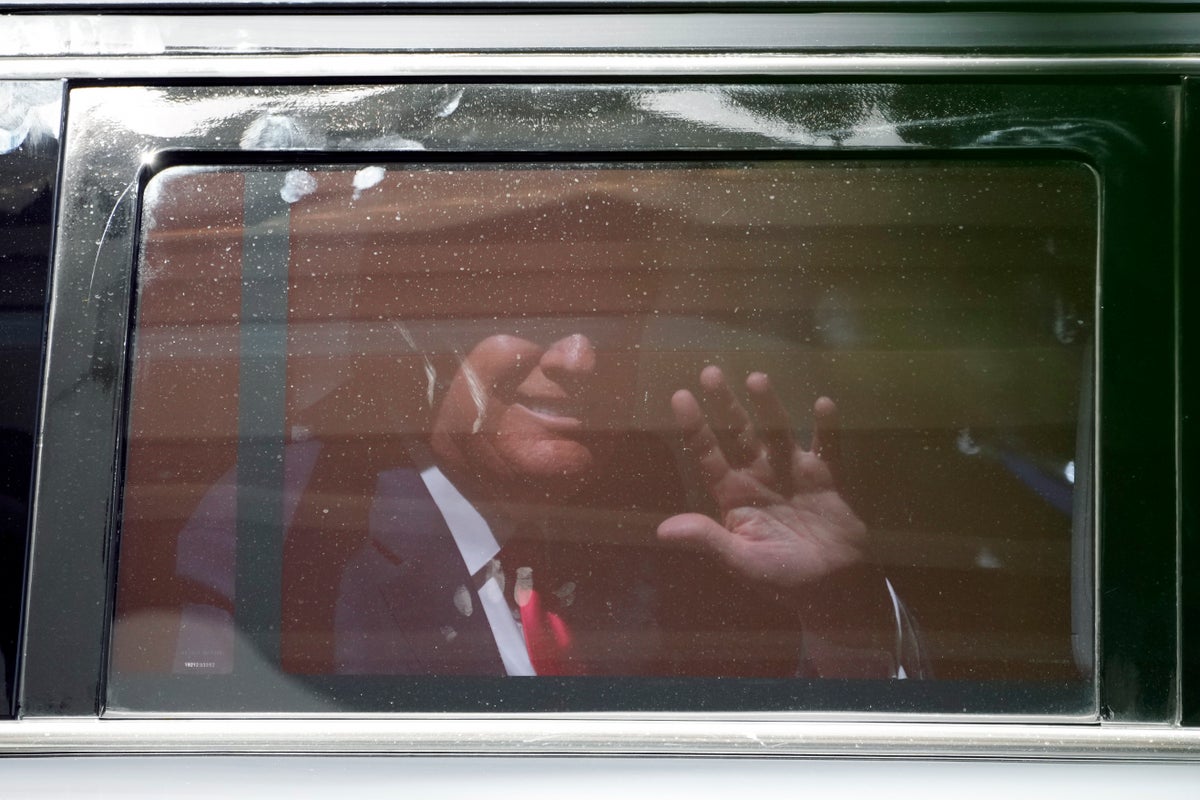
Former President Donald Trump’s federal arraignment in Miami on Tuesday was historic — yet virtually invisible to the public.
In an era when people are accustomed to instantly available images and sounds of important events, Trump's not-guilty plea to charges of hoarding classified documents was a step back in time. Hundreds of photographers and television crews were at the courthouse — many broadcasting live from outside — but they couldn't show the key moments inside the courtroom.
Efforts by news organizations to loosen restrictions that generally prohibit cameras in federal courtrooms failed, despite the event’s unprecedented nature. It was a stark contrast from Trump’s arraignment in New York earlier this year.
Trump eventually found a way on Tuesday to fill the void after leaving the courthouse — with a stop at a Cuban restaurant, where he could bathe in the cheers of supporters.
“This is the visual he wants — I just left the court. I'm good,” said CNN's John King.
Earlier, he arrived at the courthouse to be booked and enter his plea and then left without being seen. Cameras followed a motorcade of black vehicles with tinted windows.
“This is a little bit old-fashioned,” said Fox News Channel's Mark Meredith. “We're not going to be able to see what's going on in the courtroom.”
News organizations had petitioned the court to allow photographs of Trump to be taken prior to his arraignment, and permit the public release of an audio recording of the court proceeding after it was done. Yet on Monday night, U.S. Magistrate Judge Jonathan Goodman denied the requests.
Also Monday, Chief U.S. District Judge Cecilia Altonaga ordered that no journalists could possess electronic equipment anywhere in the courthouse on the day of the arraignment. Prior to her order, credentialed journalists at the courthouse had been allowed to use cell phones and computers.
“It's kind a black hole inside the building,” said David Reiter, executive producer of special events for CBS News.
Most reporters in the courthouse were confined to an overflow room, where they watched the proceedings on “the kind of televisions you get in low-cost hotel rooms,” CBS News reporter Scott MacFarlane said.
Through a random draw, some journalists — including at least one sketch artist — were allowed into the courtroom itself.
News organizations scurried to make arrangements to deal with the restrictions. Several television networks, for example, placed a handful of reporters and producers in the overflow room, sending them out one-by-one to report from the outside on what had happened. Once they left, reporters could not get back in the room.
Newsmax headlined on its screen: “Trump to Enter Plea Any Moment Now.”
The limits on journalists were quickly apparent. ABC News, for example, reported while the hearing was still ongoing that Special Prosecutor Jack Smith was in the courtroom. Yet when NBC News reporter Gabe Gutierrez was asked about that by anchor Lester Holt, he confessed he wasn't certain because he was limited in what he could see.
Some commentators couldn't resist making assumptions, either, like when ABC's John Santucci suggested Trump would be “trying to find a way to be a little charming” when he spotted Smith.
CNN's Jake Tapper, in debriefing reporter Evan Perez, said he couldn't ask him to be a mind-reader in assessing Trump's mood. Then he did precisely that.
“He appeared very glum,” Perez said. “He did not seem to have a lot of energy.”
With time to fill, most networks took it live when a new Trump spokesperson, Alina Habba, spoke outside the courtroom. MSNBC cut her off, however, and CBS’ John Dickerson noted that she did not address the specifics of any charges against the former president.
An outage at the Amazon Web Services cloud computing unit on Tuesday severely restricted some news organizations, including The Associated Press, from sending material at precisely the time of Trump's arraignment. The Verge and PennLive.com were also affected.
Reporters kept a close eye on people gathered outside of the courtroom, including several banner-waving Trump supporters, a few anti-Trump demonstrators, and journalists from around the world — China, Australia, France, Germany and Australia.
A handful of news organizations that sent reporters to the scene hired private security in case there was trouble.
“It’s a small price to pay for peace of mind,” said Nathan King, the White House correspondent for China’s state run CGTN. King said he had to flee an angry group of demonstrators at the U.S. Capitol on Jan. 6, 2021 and watched as some of his equipment was destroyed.
Katie Taylor, a 76-year-old retired real estate agent and Trump supporter, drove 15 hours from Virginia to be part of the scene.
“We all know what’s going to happen inside the courtroom. What I care about is what they report on what is happening out here,” said Taylor, who gets her news mostly from conservative outlets like Newsmax and Bannon’s War Room. “I want to see it with my own eyes.”
Some Trump supporters snapped photographs of people in the media and recorded their interviews.
Dominic Santana, who retired in Miami after decades of operating an eatery in the New York area, showed up wearing a black and white striped jailhouse uniform, complete with handcuffs and a plastic ball and chain to celebrate what he hopes will be Trump’s imprisonment. He carried a sign saying, “Lock Him Up.”
“A fellow New Yorker can spot a rat a mile away,” said Santana, 61, a political independent who said his mother and daughter voted for Trump.
____
Goodman reported from Miami.




!["[T]he First and Fifth Amendments Require ICE to Provide Information About the Whereabouts of a Detained Person"](https://images.inkl.com/s3/publisher/cover/212/reason-cover.png?w=600)


